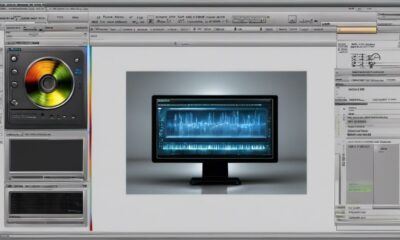Virtual Instrument Library
Rhythm by Code | Monome Teletype, Shapeshifter, Plaits x 3, Beads
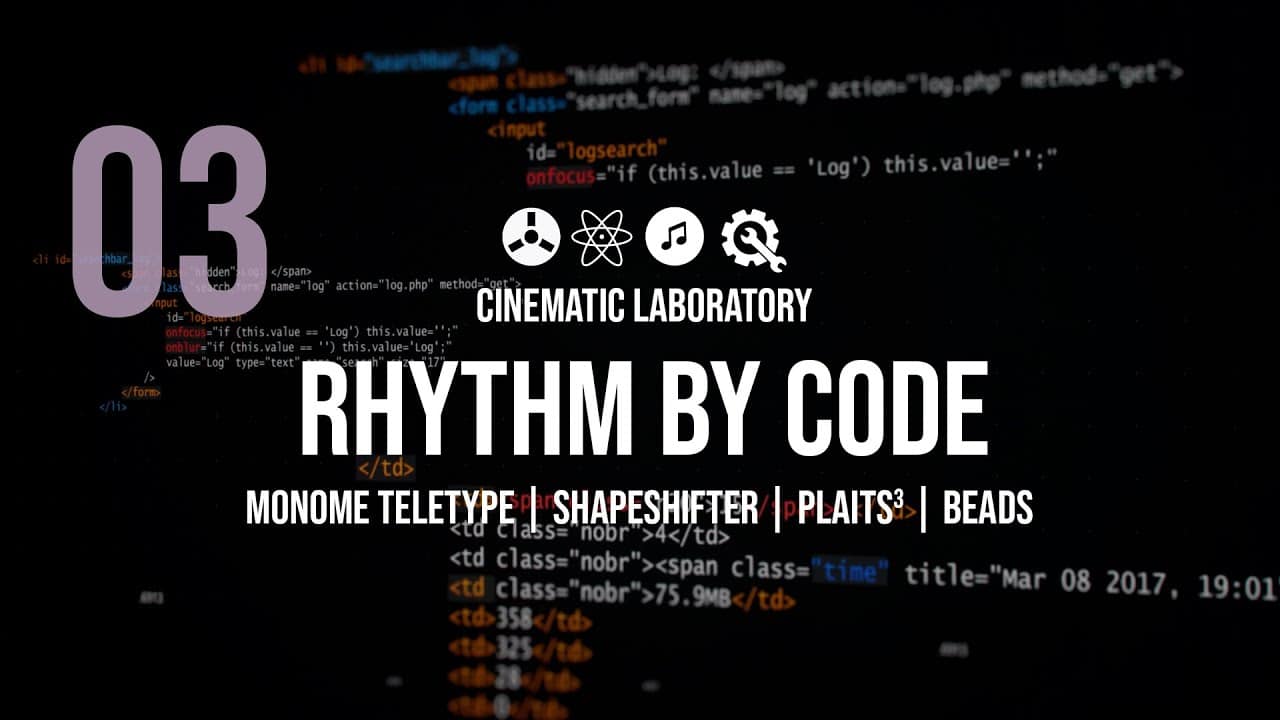
Rhythm by Code
The third episode in my Teletype series. This time, I will create a simple rhythm machine with a bit of Grids-like density control on the hat. Easy to learn, lots of fun!
Here’s the code with some explanations.
Intitialization Script I
PARAM.SCALE 0 100
M 2000
In plain English:
Set the parameter knob scale to a range between 0 and 100
Set the metronome to 2 seconds (2000 msec)
Metronome Script M
This script executes every 2 seconds
CV 2 V RRND 1 8
CV 3 V RRND 1 8
CV 4 V RRND 1 8
So the metronome generates three random values between integer values between 1 and 8, kind of like octaves. They’re used for dramatic modulation of timbre and the modulation is not related to any clock.
SCRIPT 1
Script 1 is triggered by any clock, but expects 16th notes. So for every trigger, the following code gets executed:
EVERY 4: TR.PULSE 1
EVERY 8: TR.PULSE 2
DEL RRND 20 35: TR.PULSE 3
PROB PARAM: TR.PULSE 4
PROB PARAM: CV 1 V RRND 1 5
EVERY 13: TR.PULSE 1
For every fourth trigger, fire a pulse to trigger 1 – the kick
For every eighth trigger, fire a pulse to trigger 2 – the snare
So these two lines are clock dividers creating a four on the floor.
Wait a few milliseconds. The number of milliseconds is random between 20 and 35. Then, fire trigger 3 – the ‘human’ hat.
The parameter knob can be read with the PARAM keyword. We’ll use it to set a probability between 0 and 100 for firing off Trigger 4.
We’ll use the same probability to send CV to CV output 1, a voltage of 1, 2, 3, 4 or 5 volt (integer values).
Every 13th trigger we’ll fire another kick, creating polyrhythmic variations in the kick pattern.
Audio Brewers
Peace by Audio Brewers – An Overview, the Innovative Bowed Instrument
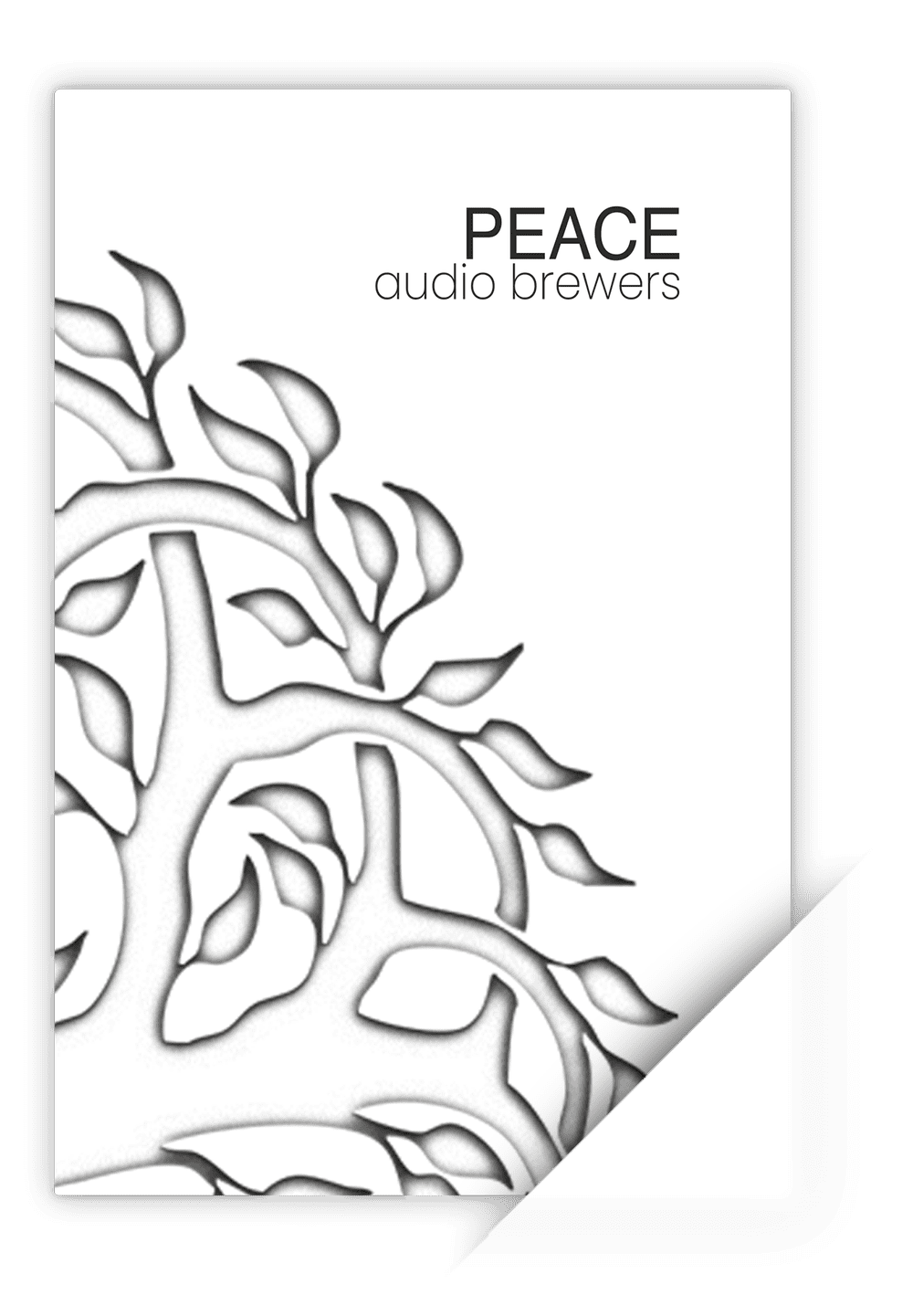
If you’re a music producer or composer, you’ll know that an instrument’s sound can significantly impact the overall feel of a piece.
That’s why DustBowl Cinematic and Audio Brewers are so excited to present their one-of-a-kind bowed instrument – Peace! Let’s explore just what makes this innovative instrument so unique.
Design and Craft Process
Created by master luthier Stamatis Stringaris through a laborious transformation process, Peace was crafted from a decommissioned Soviet missile shell.
The delicacy and precision required for such an endeavor is truly awe-inspiring.
Audio Brewers partnered with DustBowl Cinematic during the creation process to capture every minute detail of this unique instrument to create the highest quality samples possible.
Finding the Best Sonic Spots
The team at Audio Brewers then set out to find the best sonic spots where they could capture the sound of Peace in its purest form.
This involved creating an immersive sonic ambiance for each note and adjusting each sample until it perfectly reflected the instrument’s original sound. As a result, listeners can expect crisp, detailed notes that evoke feelings of peace and tranquility with each listen.

Power and Versatility of Next-Gen Adaptive Polyphonic Legato
What sets this bowed instrument apart from other musical offerings is its use of Next-Gen Adaptive Polyphonic Legato technology which allows it to automatically adapt to playing speed and dynamics without any mouse or DAW control needed – freeing musicians from being slaves to technology.
Additionally, Voice Movement Awareness ensures that even when using many voices simultaneously, each one will remain distinct and true to its original sound.
Stamatis Stringaris Pushes Boundaries with One-Of-A-Kind Missile Shell-Bowed Instrument
Stamatis Stringaris has taken his artistry to the next level by creating a one-of-a-kind bowed instrument crafted from the shell of a missile. Stringaris, the founder of DustBowl Cinematic, was inspired by unconventional materials such as found objects and fabrics to create something truly unique.
Using his skill and creativity, he fashioned this instrument out of all things industrial – an object built for destructive purposes now fashioned into something musical. He is pushing boundaries with his new design and immersing himself in the world of neo-traditionalism.
Audio Brewers and Dust Bowl Cinematic Collaborate to Bring Unique, Expressive Instrument to Life with Intuitive User Interface
Audio Brewers and DustBowl Cinematic have come together to bring a unique instrument to life. Through the detailed sampling of the instrument, its true personality can be heard.
Every nuance is captured, recreating a one-of-a-kind sound perfect for any artist. This expressive creativity is further amplified with the bonus of an intuitive user interface, making it easier than ever before to come up with seriously professional-looking results.
With the combined efforts of Audio Brewers and DustBowl Cinematic, this instrument’s power can be unleashed from studio productions to everyday music creation!

Peaceful Sound Achieved: The Complex Process of Crafting and Sampling a Calming Instrument
The development of peace is a highly complex process, beginning with the initial design and crafting of the instrument. Subsequently, finding its best sonic spots requires meticulous attention to craft an instrument that meets the desired specifications.
Sampling and mixing using immersive techniques isn’t quick or easy either; much trial and error must be used to find the optimal combination for a peaceful sound. Ultimately all of this work helps create a truly calming listening experience when these elements are brought together perfectly.
Revolutionary Polyphonic Legato Technology Brings New Level of Peace and Harmony to Musical Performances
Peace and harmony can now be achieved with the aid of enhanced Polyphonic Legato technology. This revolutionary product is adept at automatically adapting to the nuances and dynamics of an individual’s playing speed, allowing players of all levels to express themselves much more naturally.
A wide range of sound types, instruments, and evolution techniques make this a truly unique product that provides crystal-clear sound quality no matter the genre or style. Finally, players can enjoy unrivaled performances thanks to this innovative technology that takes their musical talents to new heights.
Revolutionary Adaptive Polyphonic Legato Liberates Musicians, Revolutionizes Music Production
Adaptive Polyphonic Legato technology liberates musicians from restrictive editing and production methods, revolutionizing the way music is made.
Adaptive Polyphonic Legato (APL) is musicians’ next big game changer. The vision of APL was born out of a need to break free from the often daunting and restrictive areas of using a mouse for music editing and a DAW for music production.
It is designed, coded, and explicitly adapted by and for musicians so that they can be liberated from tedious click-and-drag tasks. By harnessing the power of APL to its full potential, creatives can produce more freely and create groundbreaking music faster than ever before. Ultimately, this powerful new technology looks to revolutionize the way music is made in the 21st century!

True Panning and Dolby Atmos
When it comes to mixing, True Panning is an innovative technique that Crescent has pioneered. It allows users to place a strings ensemble around the listener’s head in three-dimensional space, creating an immersive experience unlike any other. It utilizes Ambisonics technology to achieve this, allowing for a much more realistic representation of the performance than traditional stereo hard panning.
Dolby Atmos is another technique that can take advantage of the spatial capabilities presented by Crescent products. Instead of simulating spaces and then placing a stereo signal in them like most other methods, Atmos uses a fully spatialized recording and unfolds it around the listener’s head – providing an incredibly accurate representation of what you would hear if you were present during the recording session. Furthermore, this process can be done in a matter of seconds and requires minimal effort on the part of the mixer.
Both techniques provide users with unprecedented levels of immersion and accuracy when compared to traditional processes, thus making them invaluable tools for achieving superior recordings and mixes.
The ease-of-use and impressive sound quality provided by both True Panning and Dolby Atmos make them essential components for any musician or engineer looking to take their productions to the next level.

4 Stereo Mixes Included
- A Mix offers great balance from the Musician’s perspective. You’ll feel embraced by the sound of the instrument plus you will hear the sound of the helmet complementing it with a reverb-like sensation.
- A BODY Mix offers the sound the shell emanates. The sound contains much more body and colour in the lower end.
- A HELMET Mix offers the sound that comes from the military helmet. Filling your music field with a thin reverb-like sound.
- A BINAURAL Mix offers the best Immersive type of sound if you are wearing headphones.
Stereo mixing is essential in music production, allowing the engineer to create a well-balanced mix that suits their artistic vision. By combining audio signals from multiple sources into a single stereo output, the engineer can create a sonic landscape that is truly unique and engaging.
At its core, stereo mixing involves combining two separate audio tracks – each of which has both left and right channels – into one complete mix. This technique also allows engineers to create various effects such as panning, spatial placement, reverb, compression and more. Commonly used to refer to the practice of blending different instruments or elements together to form a single soundscape, stereo mixing creates depth and texture in recordings.
One type of stereo mix is known as the ‘Mix’, which seeks to provide a balanced sound from the musician’s perspective. It combines all of the audio sources together by blending them into one cohesive mix. This type of mix ensures that each instrument is given equal weight within the recording and creates an immersive listening experience for the listener.
A ‘Body Mix’ on the other hand focuses more on creating a fuller overall sound through accentuating bass frequencies whilst still providing clarity for each instrument. Meanwhile, ‘Helmet Mixes’ offer a more reverb-like sound as they use military helmet microphones to capture sounds with thin reverberations that fill out the overall sound field.
Lastly, binaural mixes are explicitly designed for headphone listening experiences, offering an even more immersive sonic experience because they take advantage of directional cues inherent in natural 3D sound fields.
In conclusion, stereo mixing offers multiple options for creating engaging sonic landscapes that use various techniques such as panning, reverb and compression. Whether you’re looking for a balanced ‘Mix’ or something with greater body such as a ‘Body Mix’ or Helmet Mix’ – there’s sure to be something that meets your needs!
Experience the Future of Sound: Immersive Perspectives Revolutionizes Music Listening with Ambisonic Technology
Immersive Perspectives offers a different listening experience than traditional stereo or surround sound mixes. These mixes are created using Ambisonic technology, replicating a real-life environment’s sound to create a fully immersive 3D soundscape. Ambisonic technology captures sounds from all angles by using multiple channels and microphones placed strategically around the room, giving listeners an unprecedented level of realism and immersion.
In these real-world scenarios, sounds come from all directions—above and below our heads, from behind us and ahead of us, and from above and beyond us—creating a much more realistic listening experience than what could be achieved with a traditional stereo or surround sound mixes. With Immersive Perspectives, listeners can feel as if they’re actually in the recording space with the artist as they play their instrument.
Immersive Perspectives also offers true panning capabilities—listeners can move through virtual space as if they’re physically inside it. This enables engineers to place instruments at varying distances throughout the mix to create dynamic depth and movement in the soundscape. The result is a mix that provides more accurate localization of sounds within the mix and allows for greater control over how those sounds interact in various playback systems.
Beyond providing an increased level of realism, Immersive Perspectives also adds storytelling elements to music production. Musicians can place instruments at different points in the mix to influence how their story is told through sound—where each instrument should be placed for maximum impact on both the listener’s ears and emotions. By using this approach, artists can transport their listeners into another world through their music without having them leave the comfort of their own homes.
Conclusion
As you can see, Peace is genuinely an innovative bowed instrument unlike anything else currently available on the market today that has been crafted with meticulous care and precision by master luthier Stamatis Stringaris in collaboration with Audio Brewers & DustBowl Cinematic.
Combining Next Gen Adaptive Polyphonic Legato technology with Voice Movement Awareness ensures that every note sounds crisp and accurate to its intended source – no matter how fast or slow it is played – allowing musicians more creative freedom than ever! Who knew something as simple as a decommissioned missile shell could revolutionize music composition? We did! And now you do too!
Best Service
Exploring the World of CH-OCTA with Chris Hein – OCTA

Chris Hein – OCTA (CH-OCTA) is a revolutionary new music instrument from Chris Hein Instruments. Its mission is to provide musicians with an innovative, comprehensive musical experience.

With its eight core mixers, solo and multi instruments, comprehensive sequencer features, and much more, CH-OCTA is quickly becoming the go-to instrument for professional musicians worldwide. Let’s take a closer look at what CH-OCTA has to offer.

Chris Hein – OCTA Crossgrade Option
Best Service has pulled out all the stops this time! ‘Chris Hein – OCTA‘ is now available, ready to make your music production woes become a distant memory. For those who already own a Chris Hein Library, you’re in luck – until January 31st, 2023 you can upgrade to this new powerful tool for only $239 with their Loyalty Crossgrade. So don’t miss out on one of the best upgrades you’ll ever see from Best Service – make sure you remember to grab it before 31st January is all we’re saying!
One thing worth noting about OCTA is that it isn’t stingy with its beauty. This instrument makes it easy to explore and find the music within yourself – whether you’re looking to craft a whimsical melody or an entire symphony. Its programmability gives you the freedom to be creative while its lyrical nature brings out that improvisational style of composition in a unique way. So, don’t be intimidated by how complex OCTA may seem at first glance – instead, let its peculiar charm gracefully draw you in and uncover some of your most creative pieces.
The MEGA STRUCTURE Engine
At the heart of CH-OCTA is its MEGA STRUCTURE engine. This 8-core mixer allows users to layer multiple instruments in up to 8 different channels or combine multiple instruments in a single track.
In addition, it offers a range of solo and multi instruments that can be further customized by changing their parameters or adding effects such as reverb and distortion.
For those who want more control over their sound creation process, the comprehensive sequencer features allow users to create intricate patterns and rhythms easily.
CH-OCTA as the First Instrument in the Series As the first instrument in the CHRIS HEIN series, CH-OCTA has some impressive features that make it stand out from other instruments on the market today.
One of these features is its wide variety of solo instruments that can be used for both composing and recording purposes. These include guitars, basses, drums, strings, woodwinds, brass and synthesizers —all of which can be used alone or layered together to create unique sounds.
Also, CH-OCTA has a number of multi-channel instruments that make it easy and quick to combine different sounds and make complex compositions.
Finally, its sequencing capabilities are top notch; users can sequence up to 8 channels simultaneously for maximum flexibility when creating their music.
Comments and Reviews from Professional Musicians Many professional musicians have already been blown away by CH-OCTA’s impressive capabilities.
From jazz guitarists who appreciate how easy it makes creating intricate compositions to DJs who love how powerful its mixing capabilities are—everyone seems to agree that this instrument has something special about it that sets it apart from other similar products on the market today.
Moreover, many users also attest to how intuitively designed this instrument is; they find that even novices can get up and running with minimal effort thanks to its user friendly interface design.
Chris Hein Blends Traditional and Unique Instruments to Create Out-of-this-World Soundscapes
Chris Hein not only recorded the beautiful Concert Vibraphone, Glockenspiel from the WDR Symphony Orchestra, and Grand Marimba from a friend – he also addd some truly unique instruments to his collection.
His self-made MyTube instrument, plucked instruments such as the Guitarette and Monochord, an array of Kalimbas and other “tonal” percussive instruments all make an appearance. After experimenting with combining these instrument with synths, pads and keys, Chris realized his collection could also be used as a sound source for a multi-instrument. Talk about out of this world!
OCTA Instrument: A Revolutionary New Product for Studio Creativity
Chris Hein’s OCTA instrument concept revolutionizes modern studio set-ups with groundbreaking versatility and comprehensive sound capabilities.
OCTA combines 8 core mixers, multi instruments, a comprehensive sequencer and more for an unprecedented music creation experience. This new product marks the entry of the CHRIS HEIN series into modern studio creativity, with its amazing range of features and functionalities that will take musicians to new heights of sound exploration.
After 3 long years of research, development, and hard work, the introduction of Chris Hein’s OCTA instrument concept is finally here! This groundbreaking new product brings a variety of sounds and textures to the studio that were previously unavailable.
Users have praised its complexity for being so versatile and comprehensive, allowing them to create not just unique sounds but entire musical ideas in one place.
From elegantly plucked harps to layered synths and strings, Chris Hein has truly revolutionized the modern studio set-up with OCTA and given producers far-reaching creative potential.
Unleash Your Musical Creativity with the Revolutionary MEGA STRUCTURE Engine
The MEGA STRUCTURE engine is an intriguing musical tool that offers composers the chance to explore their talents in the digital realm.
With eight core mixers and a host of solo and multi-instrument options, it has everything a musician needs to create and enhance their sound.
Including a comprehensive sequencer also allows musicians to sequence various instruments at different times and layer different melodies and parts over one another.
This opens up a world of possibilities for musicians venturing into the digital realm, allowing them to take their compositions further than ever before without sacrificing quality or creativity.
Revolutionize Your Vocal Sound with the Groundbreaking CH-OCTA: 8-Channel Dynamic Vocal Processor
The CH-OCTA is a groundbreaking instrument and the first of its kind to be developed in the MEGA STRUCTURE series. It houses an amazing 8-channel dynamic vocal processor, which allows users to shape their sound with unprecedented control.
The unique combination of advanced technology and user-friendly controls make it easy to create professional-quality vocal sounds quickly and easily. With the ability to record, mix, and master up to 8 different channels of sound simultaneously, this instrument stands out as a powerful tool for any musician.
Whether you’re a novice or professional, the CH-OCTA can help you take your musical creativity to an entirely new level.

Unleash Your Creativity and Explore a New Sonic Environment by Combining Multiple Sound Sources
What happens when you take the natural woody tones of a marimba and layer them with the metallic voices of a vibraphone? You might think you’ve heard beautiful music, but why not take it to the next level? CH-OCTA is here to do exactly that – it allows you to combine up to 8 sound sources and explore an entirely new sonic environment.
Get creative! Carefully arrange different instruments in order to create something totally unique, and channel your inner music maestro.
CH-OCTA: The Ultimate Music Production System Combining Cutting Edge Technology and Simple Design
CH-OCTA marries cutting edge technology with a refreshingly simple design, making it one of the most powerful music production systems in the industry.
With 100 high-quality solo instruments, 8 core multi-channel instruments, and an 8-channel sequencer, there is something for everyone no matter their level of expertise or the style of music they are creating.
Allowing users to mix and match different sound combinations provides endless options for experienced and novice musicians. Experience the flexibility and power of CH-OCTA today!

Conclusion
CH-OCTA’s debut to the MEGA STRUCTURE series is a prizewinning performance – its versatility in both the solo and 8-channel instruments led it to top the ranks when it comes to creative, improvisational sound.
Boasting an impressive line-up of 100 solo instruments and 8 core multi-channel ones, all under the aegis of an 8-channel sequencer, this workhorse is ready to make your every musical impulse come alive! With CH-OCTA’s incredible blend of functionality and spark, you’re just one spark away from creating your very own symphonic masterpiece.

If you’re looking for an innovative way to compose or perform your music without sacrificing quality or creativity then you should definitely check out Chris Hein – OCTA!
With its wide variety of solo instruments along with its powerful multi channel options and comprehensive sequencing tools—you’ll quickly discover why so many professionals are now choosing CH-OCTA as their go-to instrument for all their music making needs! Try it out today!
Omnisphere
Tom Wolfe’s Binaural Soundscapes: A Revolutionary New Soundbank for Spectrasonics Omnisphere
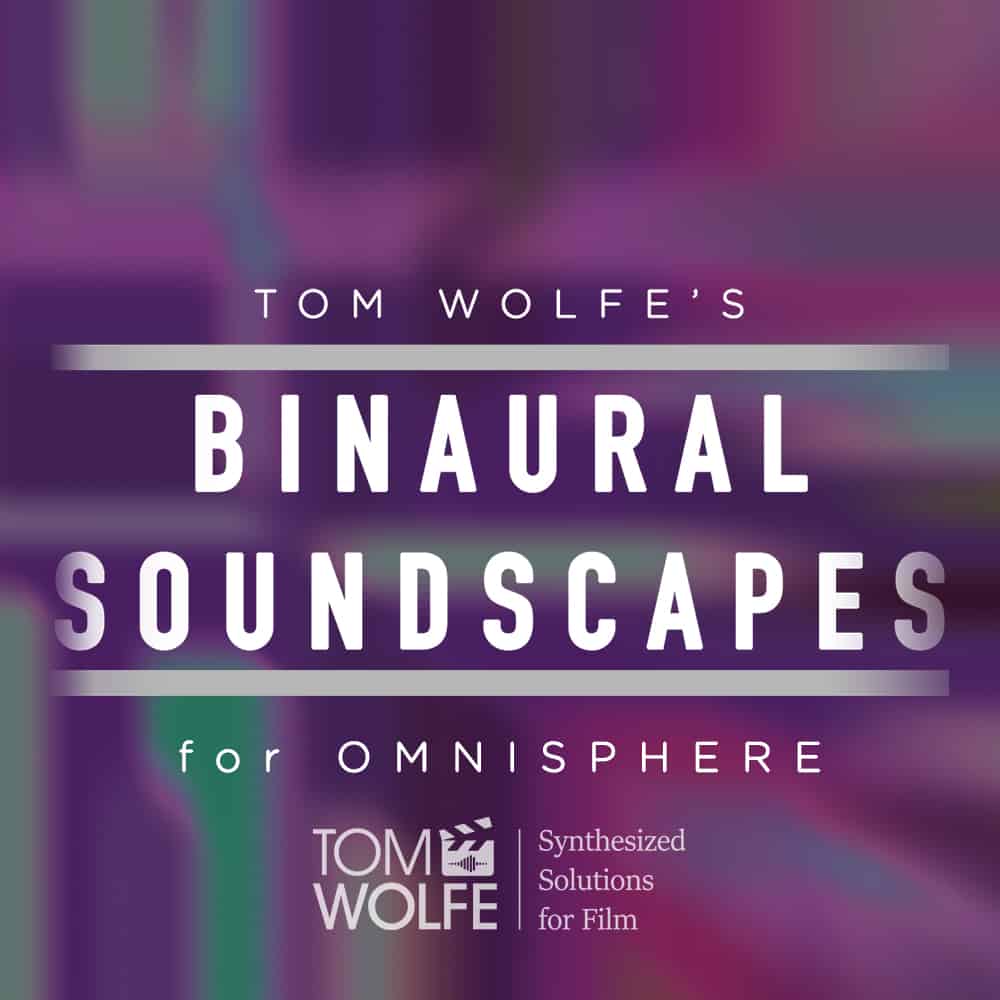
Are you a producer or composer looking for new, unique sounds to add to your music? Look no further than Tom Wolfe’s Binaural Soundscapes, a revolutionary soundbank for Spectrasonics Omnisphere.
This soundset is made up of 50 presets and 72 sound sources. Together, they create a cinematic atmosphere in an immersive 3D space that producers and composers can use to make textures with a depth that has never been seen before.
Let’s take a closer look at how Tom Wolfe’s Binaural Soundscapes are revolutionizing the world of music production.

History of Binaural Audio and its Advantages
Binaural audio is a technique that uses two microphones placed in the ears of a dummy head to capture recordings that mimic how humans hear sounds in real life. It has been used since the late 19th century, but has become increasingly popular in recent years due to its ability to recreate lifelike soundscapes with amazing realism.
This makes it particularly beneficial for producers and composers who want to create more dynamic and realistic-sounding tracks. Additionally, binaural audio allows for bigger, more spacious textures than ever before.
Cinematic Binaural Textures
The idea of cinematic binaural textures may sound complicated, but pretty simple. It’s like having surround sound through headphones, each sound precisely placed to create an immersive listening experience that transports the listener right into the middle of a movie.
Through its complexity of layered noises and effects, cinematic binaural audio forms a landscape that provides an emotional response, allowing each individual to enjoy their unique version of the movie that’s tailored to their taste. With its ability to enhance the viewing experience, it’s not hard to see why cinematic binaural textures have become such fan favorites!
What Is Binaural Soundscapes?
Is your music feeling a little flat? Consider adding some binaural soundscapes to liven things up. What’s that, you ask? Binaural audio is an exciting new technique that brings a three-dimensional sonic experience as you’ve never heard before.
Omnisphere’s Binaural Soundscapes is the perfect way to get started – with 50 presets and 72 sound sources going beyond essential ambiance to create stunning sonic spaces. You can bring your music to a new level of depth and atmosphere without ever having to leave the house!
Put: If your tracks are stuck in 2D, it sounds like it’s time for a 3D upgrade.
Exploring Tom Wolfe’s Binaural Soundscapes
Tom Wolfe’s binaural soundscapes are explicitly designed for use with Spectrasonics Omnisphere. The collection features 50 presets as well as 72 sound sources with a cinematic nature.
It also has multiple formats available so that producers can work with their favorite software programs (VST, AU, etc.). Examples of tracks created using this soundbank can be found on Tom Wolfe’s website and pricing information.
About Tom Wolfe
Tom Wolfe is a British sound designer. Tom is a well-known voice in the world of synthesizer presets. He has also won awards for his work as an independent film composer. His store, tomwolfe.co.uk, has soundbanks for some of the biggest and most popular software synthesizers and effects plugins on the market.
Users and critics alike praise Tom’s presets for being unique, creative, and easy to use. He has worked with several industry-leading companies and his sounds have been used by Oscar-winning film composers, Grammy-winning record producers, and AAA game composers.
Conclusion
Tom Wolfe’s Binaural Soundscapes provide an exciting new addition to Spectrasonics Omnisphere library of sound sources. This groundbreaking collection of 50 presets and 72 sound sources gives you a cinematic atmosphere in an immersive 3D space. This lets producers and composers make big textures with more depth and realism than ever before.
To learn more about this groundbreaking soundbank or purchase it online, visit Tom Wolfe’s website today!
Special Launch – Pricing
For a limited time only, Binaural Soundscapes is available for the introductory price of £14.99 (regularly £19.99). Also on sale is Tom Wolfe’s Omnisphere Collection, featuring all 1350 of Tom’s Omnisphere Presets, currently just £174.99 (regularly £249.99). Offers end at 23:59 GMT on 25th January 2023.
Binaural Soundscapes FAQ
What is binaural soundscape?
Binaural soundscapes are recordings of 3D immersive audio experiences that use advanced recording techniques to capture and recreate the acoustics of a physical space. They are designed to immerse listeners in a realistic auditory environment, often using sounds from nature or other real-world settings.
How do binaural soundscapes work?
Binaural soundscapes are created by recording audio with two microphones placed at different distances from the sound source, and then processing the signals to recreate a 3D spatial image for the listener. The human brain perceives this as being in a real-world environment and can help with relaxation, focus, and mindfulness.
What are the benefits of binaural soundscapes?
Binaural soundscapes can be used to promote relaxation, reduce stress and anxiety, improve concentration and focus, enhance creativity, and encourage mindfulness. They can also be used to help with insomnia, tinnitus relief, enhanced meditation practices, and more.
Where can I get binaural soundscapes?
You can find a variety of binaural soundscapes available for purchase online or streaming services such as Spotify or Apple Music. There are also many free binaural recordings available on YouTube that you can use to begin exploring the world of 3D immersive audio experiences.
Are there any risks associated with binaural soundscapes?
Binaural soundscapes are generally considered to be safe and harmless. However, as with any audio recordings, users should take caution when using headphones at high volumes or for extended periods to avoid potential hearing damage. Additionally, some people may experience headaches or dizziness when listening to certain sounds in a 3D environment. If this is the case, it is recommended that users take frequent breaks from listening and adjust the volume accordingly.
Do binaural soundscapes work on all devices?
Due to varying hardware specifications between devices, it is difficult to guarantee that a binaural soundscape will work on all devices. It is recommended that you check the specifications of your device before purchasing or streaming a binaural soundscape. Additionally, some devices may require specific software to play back the 3D audio correctly.
Are there any other tips for using binaural soundscapes?
For best results, it is recommended to use headphones when listening to binaural soundscapes, as this helps create a more realistic and immersive experience.
Additionally, taking breaks during listening sessions can also help with concentration and focus. Finally, it is important to keep in mind that everyone reacts differently to different types of audio experiences and what works for some may not work for others. Experimenting with different sounds and environments can be helpful in finding the perfect binaural soundscape for your needs.
For best results, it is recommended to use headphones when listening to binaural soundscapes as this helps create a more realistic and immersive experience. Additionally, taking breaks during listening sessions can also help with concentration and focus. Finally, it is important to keep in mind that everyone reacts differently to different types of audio experiences and what works for some may not work for others. Experimenting with different sounds and environments can be helpful in finding the perfect binaural soundscape for your needs.
-
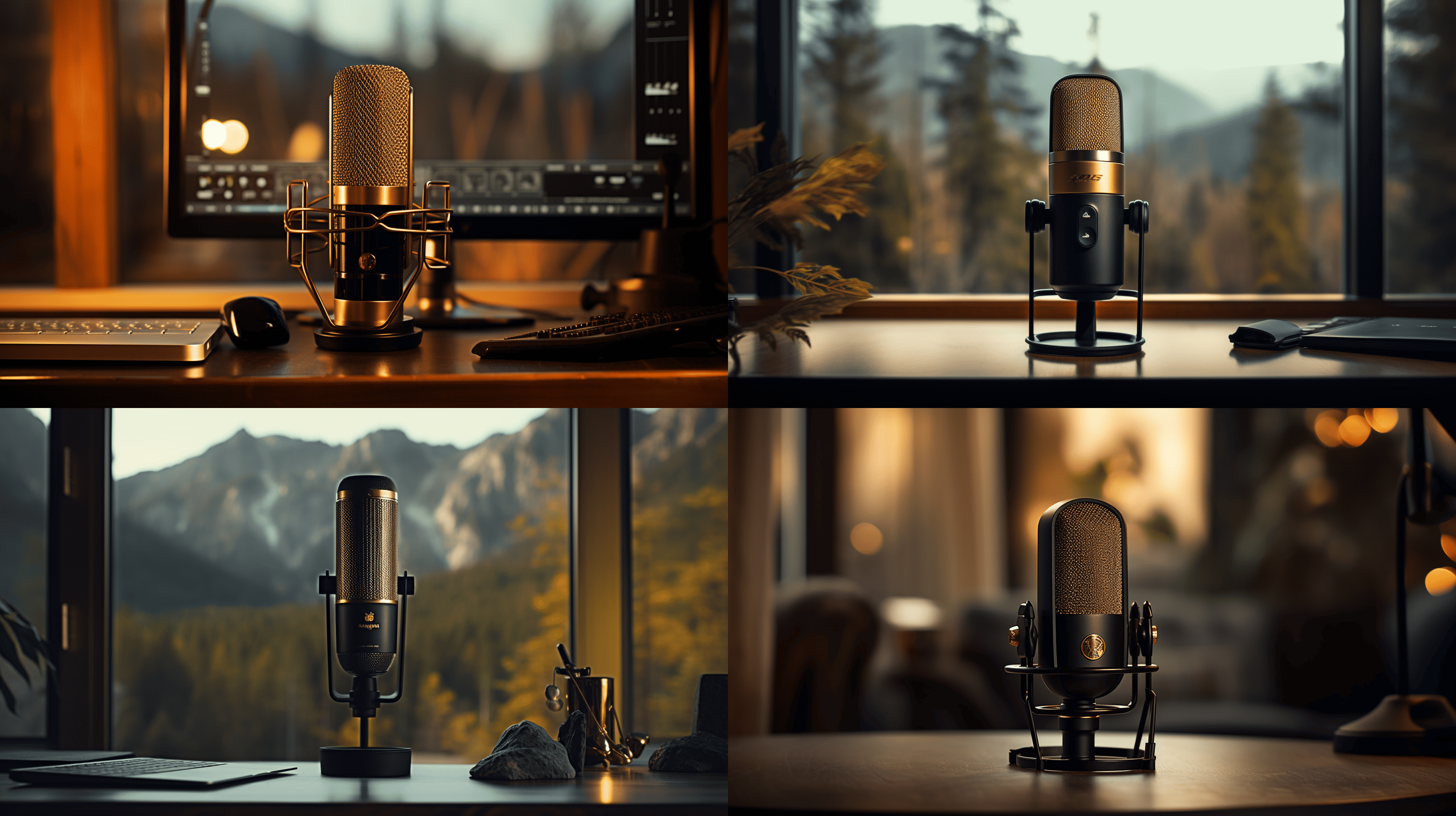
 Microphone2 weeks ago
Microphone2 weeks agoUnleash Your Inner Podcaster: Discover the Best Microphone for Crisp, Clear Audio
-

 Music Theory2 weeks ago
Music Theory2 weeks agoUnlocking Nature’s Harmony: The Power of 432 Hz Frequency in Sound & Music for Enhanced Living and Well-Being
-

 Native Instruments Kontakt2 weeks ago
Native Instruments Kontakt2 weeks agoVOCAL AI – Animated Intelligence: The Ultimate Vocal Playground
-
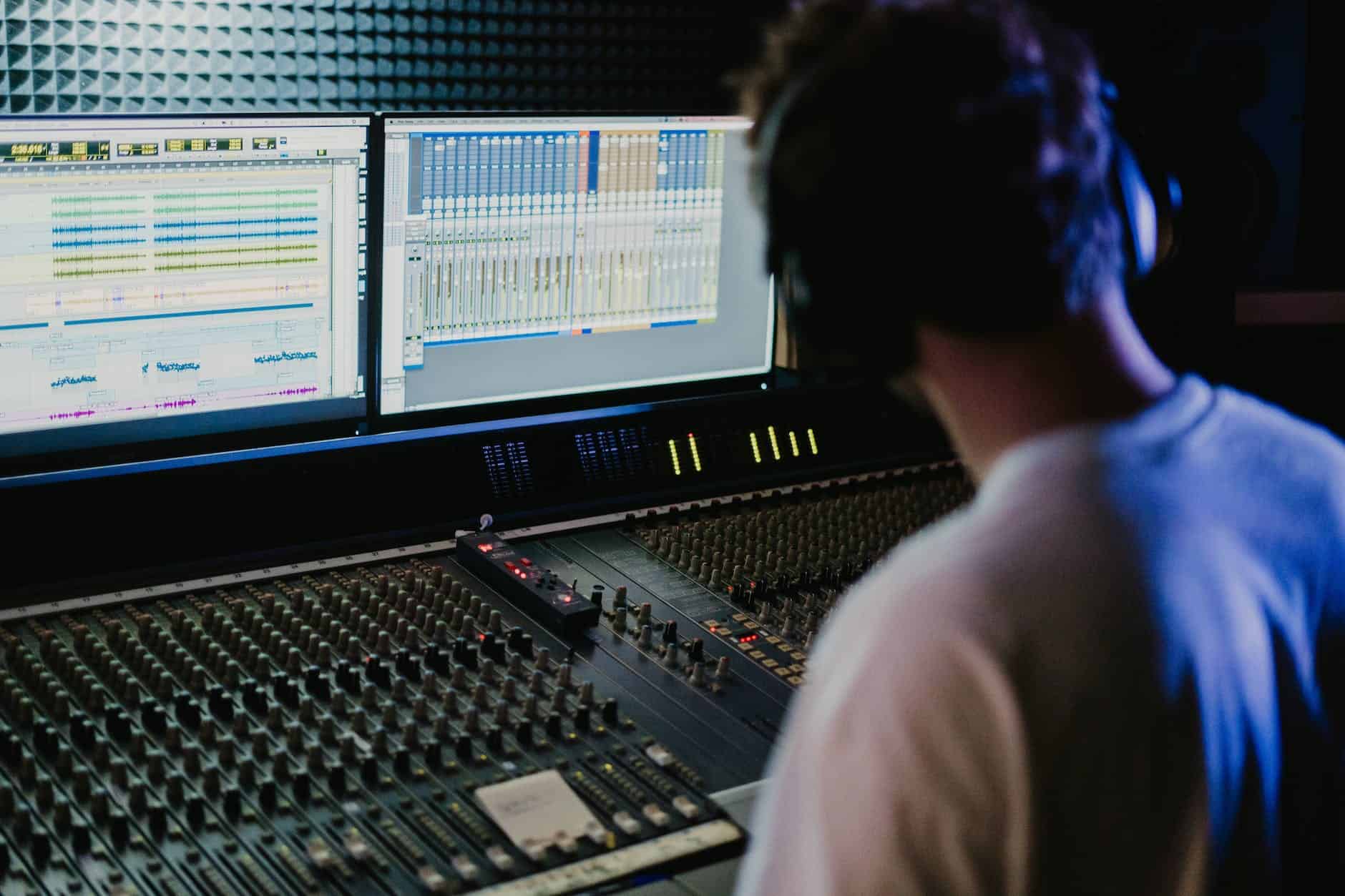
 Sound Design3 weeks ago
Sound Design3 weeks agoWhat Is the Difference Between a Sound Engineer and A Sound Designer?
-
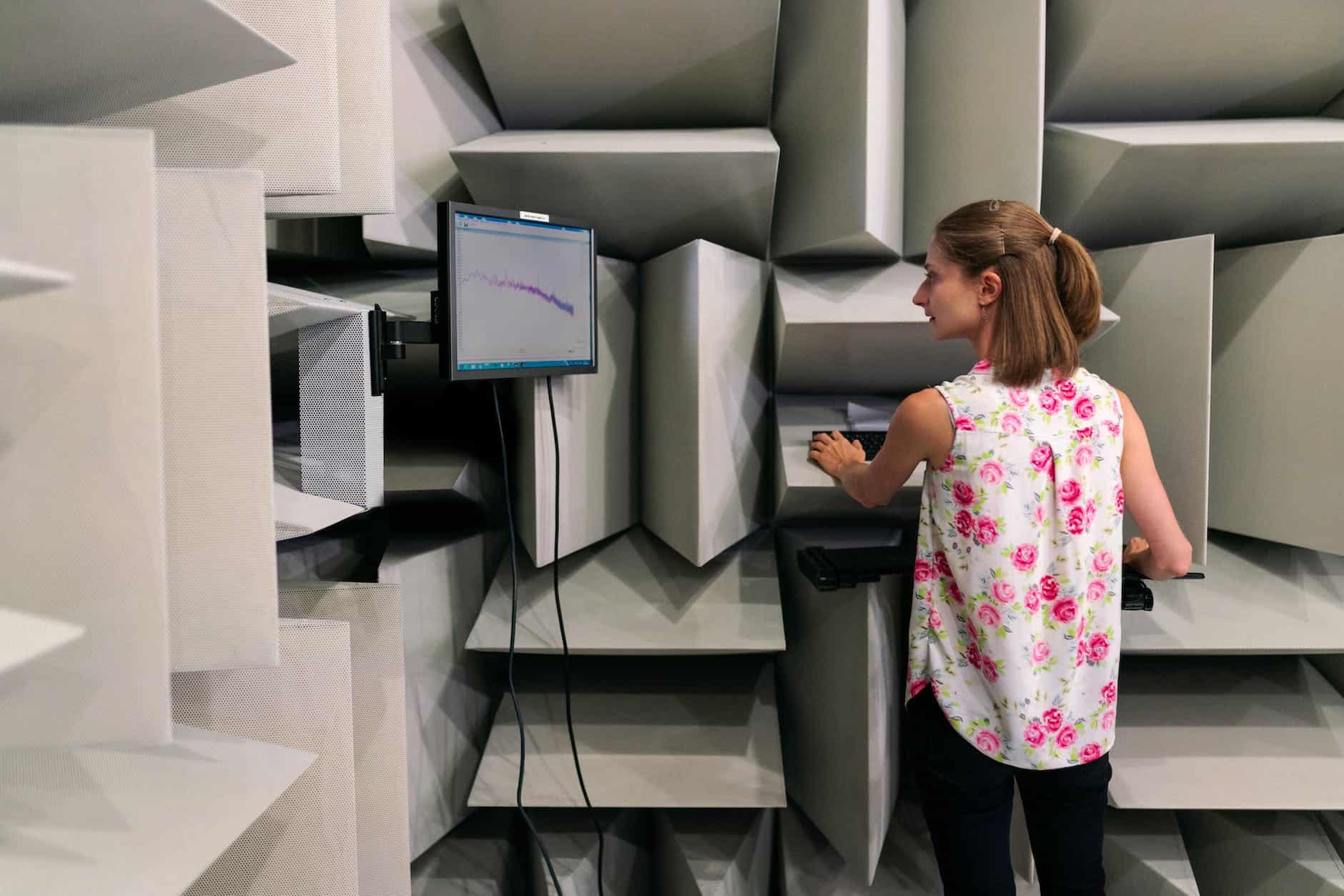
 Sound Design3 weeks ago
Sound Design3 weeks agoWhy Sound Engineer
-
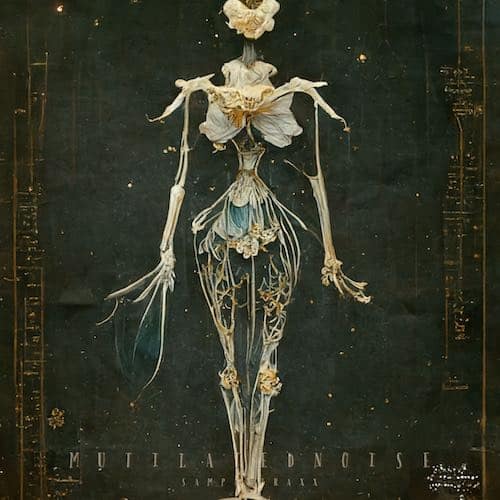
 Composing2 weeks ago
Composing2 weeks agoMUTILATED NOISE by SampleTraxx: The Next Generation Sound Collection
-

 Expert Guides3 weeks ago
Expert Guides3 weeks agoHow Do You Become a Sound Designer
-

 Expert Guides3 weeks ago
Expert Guides3 weeks agoHow to Become a Sound Designer for Film








